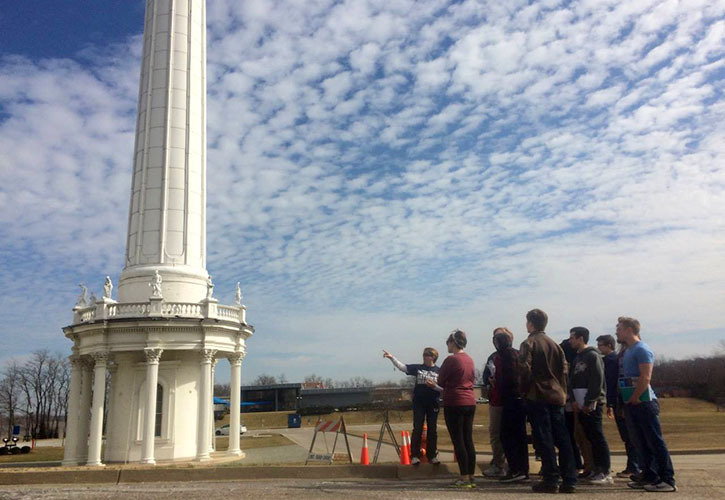Part of what it means to be an environmental scientist is to understand the causes and effects of disasters, whether that be a natural disaster like a flood or an earthquake or a human-induced hazard like a chemical spill. In my Environmental Geology
course, the environmental majors and minors spent the last six weeks or so of the semester discussing exactly this. How can our communities adequately prepare for disasters and when they do happen, how should we react to minimize the harm?
We are understandably concerned about the terrible chemical spill that happened in East Palestine, Ohio, earlier this month. The images on the news showed billowing plumes of jet black smoke, flames shooting out of the wreckage, and emergency environmental
workers chest-deep in water-deploying equipment intended to reduce the spread of the chemicals in the environment.
The chemicals did escape into the area: in the air, the water and the soil. These substances included vinyl chloride, butyl acrylate, ethylhexyl acrylate and ethylene glycol monobutyl ethers. This toxic alphabet soup includes chemicals known to severely
harm human health. There are still many unknowns about what kind of long-term effects the release of chemicals will have to the natural environment and the people of East Palestine.
Here in Louisville, many have questions about whether the release of these chemicals nearly 400 miles away would have any impact on us, especially on our drinking water. The East Palestine area is part of the broader Ohio River watershed, meaning that
any contaminated streams in the area would ultimately flow into the Ohio and eventually to the Mississippi River and out to the Gulf of Mexico.
So the question is: who is at risk from this chemical spill? Certainly the communities close to East Palestine should be concerned. It will take time to understand the level of contamination that remains in the environment, especially bound to sediment
and soil. Questions also remain about the amount of exposure that local residents received in the minutes, hours and days following the derailment and what that will mean for their short-term and long-term health.
In Louisville, we are not at risk of harm. The chemicals that made it into the waterways traveled past Louisville on Feb. 20, however they were so diluted that they were not detected at all. The recent rainfall in the region also provided dilution within the watershed, lowering the concentration even more.
The Louisville Water Company, the entity responsible for supplying our clean drinking water is responsible for testing the water supply on average 200 times a day and must adhere to extremely strict standards. Any water extracted from the river or the underlying Ohio River Aquifer goes through extensive filtration and treatment before it is ready for human consumption. In fact, we are very fortunate in Louisville,
we have extremely high quality, award-winning tap water.
Not every community in the U.S. can claim the same.
My family drinks tap water in Louisville without any additional filtration and will continue to do so. Knowing what I know about the quality of water treatment in Louisville, I have much more confidence in our tap water than I do in commercial bottled
water. The vast majority of bottled water is just filtered tap water and introduces additional environmental problems like the the
single-use plastics in the bottles and the fossil fuels necessary for its manufacture and transport. So don’t worry, enjoy the tap water and be thankful for the great work of the Louisville Water Company!
By Dr. Kate Bulinski
, Associate Professor, Department of Environmental Studies
Photo Caption: These pictures were taken when students from the Introduction to Environmental Science course visited the Louisville Water Company to learn about our area's water treatment processes and facilities.
